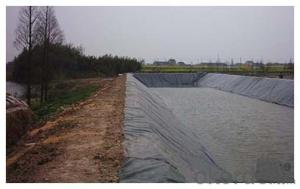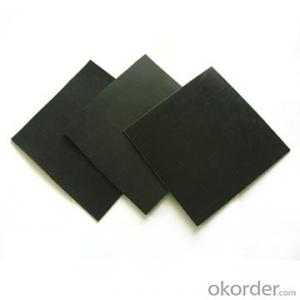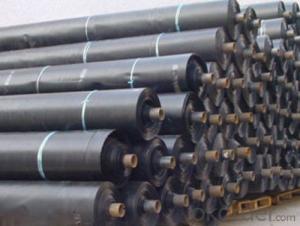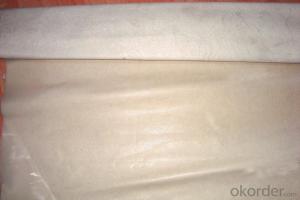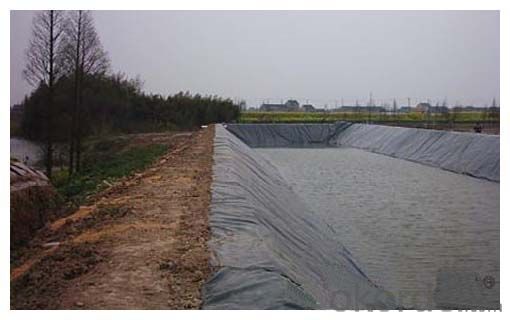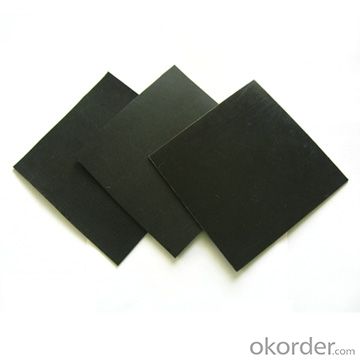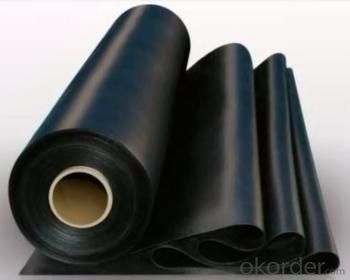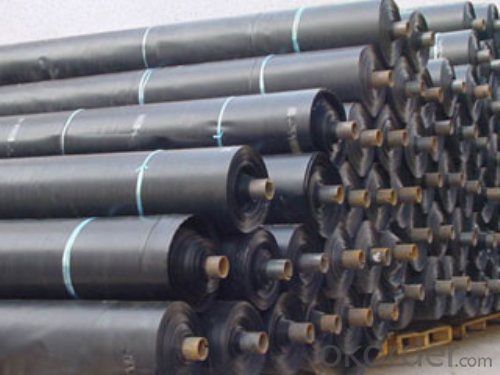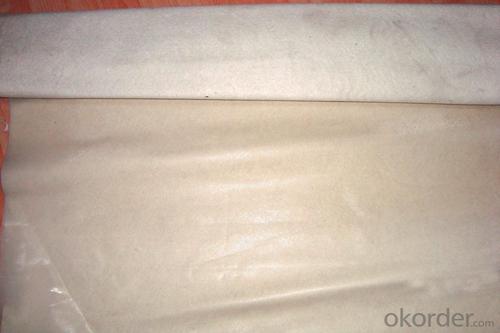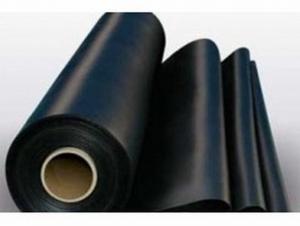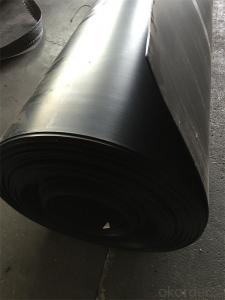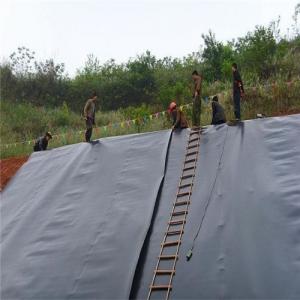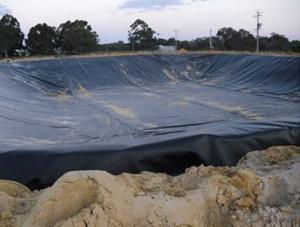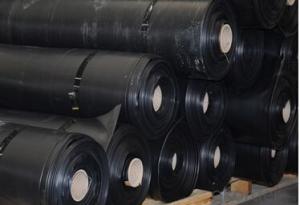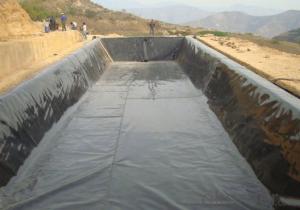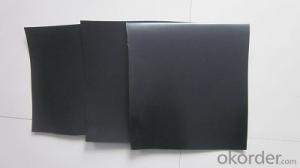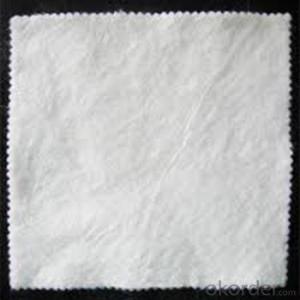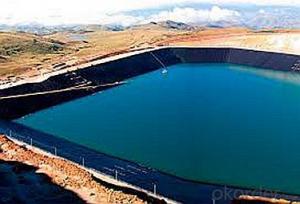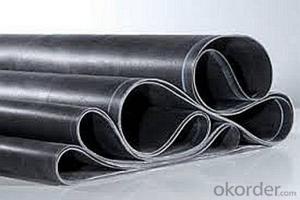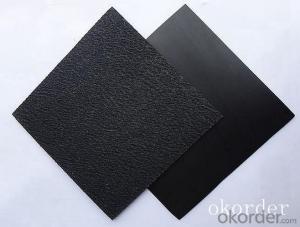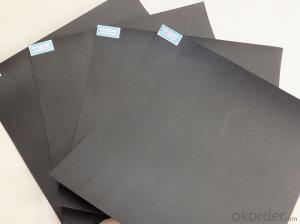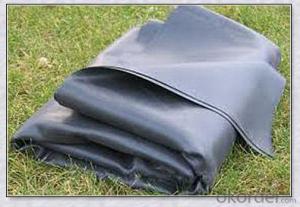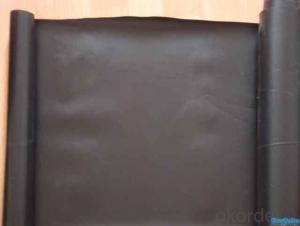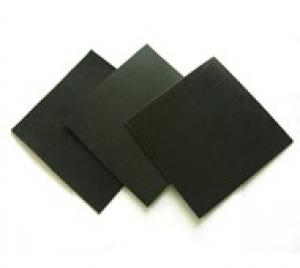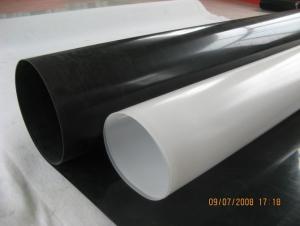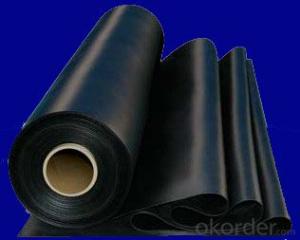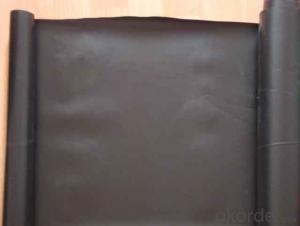Geomembrana Preço com Qualidade Chinesa de Fábrica Direta
- Loading Port:
- Qingdao
- Payment Terms:
- TT OR LC
- Min Order Qty:
- 1000 g/m²
- Supply Capability:
- 100000 g/m²/month
OKorder Service Pledge
OKorder Financial Service
You Might Also Like
Introduction: Geomembrane is a kind of waterproof material with basic raw material of high molecular polymer.
Application:
Applied in the projects of landfill waste site, bank,
dam, pool, filth treatment site, tailings depot, subway and tunnel etc.
Properties of Geomembrane
Elongation at break(%) | ≥400 | ≥400 | ≥550 | |
Right angle tearing strength(N/mm) | ≥50 | ≥80 | ≥110 | |
Carbon black content | ≥2% | ≥2% | ≥2% | |
Density (g/cc) | 0.940 | 0.940 | 0.940 | |
Permeability coefficient of vapor (g·cm/cm2·s·pa) | ≤1.0x | ≤1.0x | ≤1.0x | |
Scope of application temperature | +70℃~-70℃ | +70℃~-70℃ | +70℃~-70℃ | |
Environmental stress resistant cracking performance ( | ≥1500 | |||
Oxidation induction time at 200℃ (minute) | ≥20 | |||
Thickness (mm) | 0.3~2.5 | |||
Width (m) | 2~7 | |||
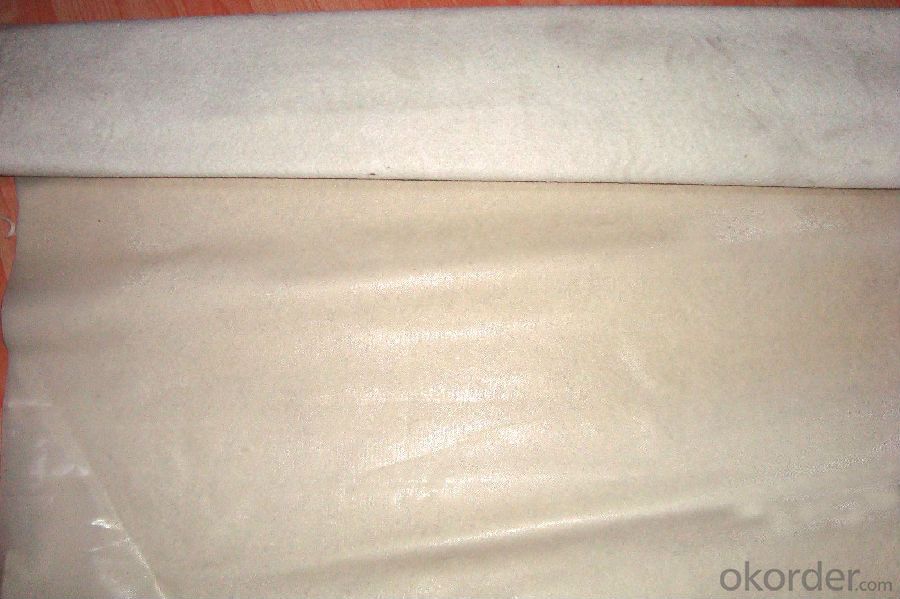
- Q: What are the advantages of using geomembranes in bioremediation projects?
- There are several advantages of using geomembranes in bioremediation projects. Firstly, geomembranes act as a barrier, preventing the migration of contaminants into surrounding soil and groundwater. This containment helps to control and concentrate the bioremediation process, allowing for more efficient treatment of the contaminated area. Additionally, geomembranes provide a stable and consistent environment for the growth of microorganisms involved in bioremediation, enhancing their effectiveness. They also prevent the loss of valuable nutrients and organic matter during the remediation process. Lastly, geomembranes offer long-term durability, ensuring the success and sustainability of bioremediation projects over time.
- Q: How do geomembranes contribute to landfill gas collection systems?
- Geomembranes contribute to landfill gas collection systems by acting as a barrier to prevent the escape of harmful gases from the landfill. They are used to line the base and sides of the landfill, creating a sealed environment that allows for the effective collection and containment of landfill gas. This gas, which primarily consists of methane and carbon dioxide, can then be extracted and utilized as a source of energy or safely released into the atmosphere, reducing the environmental and health risks associated with landfill gas emissions.
- Q: Is the hot air gun can be used to weld the composite geomembrane?
- The composite geotechnical membrane is generally welded by the as the special geotechnical membrane welding machine for welding hand - held hot air gun area of repair holes suitable for geotechnical membrane welding
- Q: What is the electric film oil heater?
- The oil radiator and electric film are both pure resistance circuit which is using resistance heating, and its efficiency is almost the same. The oil heater generates heat slowly. After cutting off the electricity, it can also generate heat for a little time. The electric film can generate heat quickly, but also cool immediately after a power failure. But they two with the same power have little difference on heat productivity. The same heating capacity and power consumption. The electrothermal?film is with a small volumn taking up a little place.
- Q: How do geomembranes contribute to water conservation?
- Geomembranes contribute to water conservation by preventing the loss of water through seepage or leakage in various applications such as reservoirs, ponds, canals, and irrigation systems. They act as impermeable barriers, reducing water evaporation and seepage, thus maximizing water storage and minimizing water wastage.
- Q: What are the installation requirements for geomembranes on slopes?
- The installation requirements for geomembranes on slopes typically include proper surface preparation, slope stabilization measures, anchoring systems, and appropriate overlap and welding techniques to ensure a secure and effective installation. It is also important to consider factors such as slope angle, soil conditions, and environmental considerations for successful geomembrane installation on slopes.
- Q: How do geomembranes contribute to landfill leachate collection systems?
- Geomembranes contribute to landfill leachate collection systems by serving as a barrier to prevent the leachate, which is the liquid generated from waste decomposition, from contaminating the surrounding soil and groundwater. The geomembrane acts as a liner, effectively containing the leachate and directing it towards collection pipes or channels, where it can be collected and properly managed. This helps to minimize the environmental impact of landfills and protect the surrounding ecosystems and water sources from potential pollution.
- Q: What are the limitations of geomembranes in high-chemical concentration environments?
- The limitations of geomembranes in high-chemical concentration environments include potential degradation or deterioration of the material due to chemical exposure, reduced lifespan and effectiveness of the geomembrane, increased permeability or leakage of the chemicals through the geomembrane, and the need for specialized materials or coatings to withstand high chemical concentrations. Additionally, geomembranes may require regular inspections and maintenance to ensure their integrity in such environments.
- Q: How are geomembranes installed?
- Geomembranes are installed by first preparing the subgrade surface, removing any sharp objects or debris. Then, the membrane is carefully unrolled and positioned over the subgrade. It is then anchored or weighted down along the edges to prevent movement. Seams are then heat-welded or chemically bonded together to ensure a watertight seal. Finally, the membrane is inspected for any defects or damages before being covered with soil or other materials for protection.
- Q: What are the advantages of using geomembranes in mining tailings ponds?
- Using geomembranes in mining tailings ponds offers several advantages. Firstly, geomembranes act as a barrier between the tailings and the surrounding environment, preventing the contamination of soil and water sources with toxic chemicals and heavy metals. This helps in safeguarding the ecosystem and protecting human health. Additionally, geomembranes reduce seepage of water from the tailings, minimizing water loss and allowing for efficient water management. They also improve the stability and integrity of the tailings pond, preventing slope failures and ensuring long-term structural integrity. Overall, the use of geomembranes in mining tailings ponds enhances environmental sustainability, reduces risks associated with tailings storage, and promotes responsible mining practices.
Send your message to us
Geomembrana Preço com Qualidade Chinesa de Fábrica Direta
- Loading Port:
- Qingdao
- Payment Terms:
- TT OR LC
- Min Order Qty:
- 1000 g/m²
- Supply Capability:
- 100000 g/m²/month
OKorder Service Pledge
OKorder Financial Service
Similar products
Hot products
Hot Searches
Related keywords
